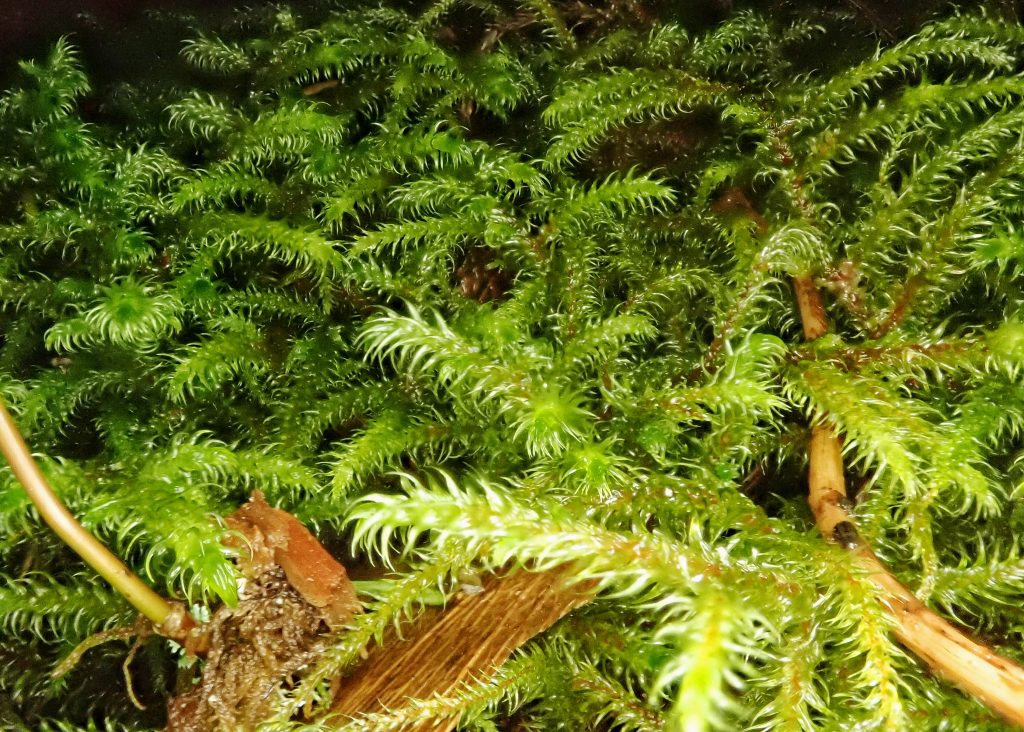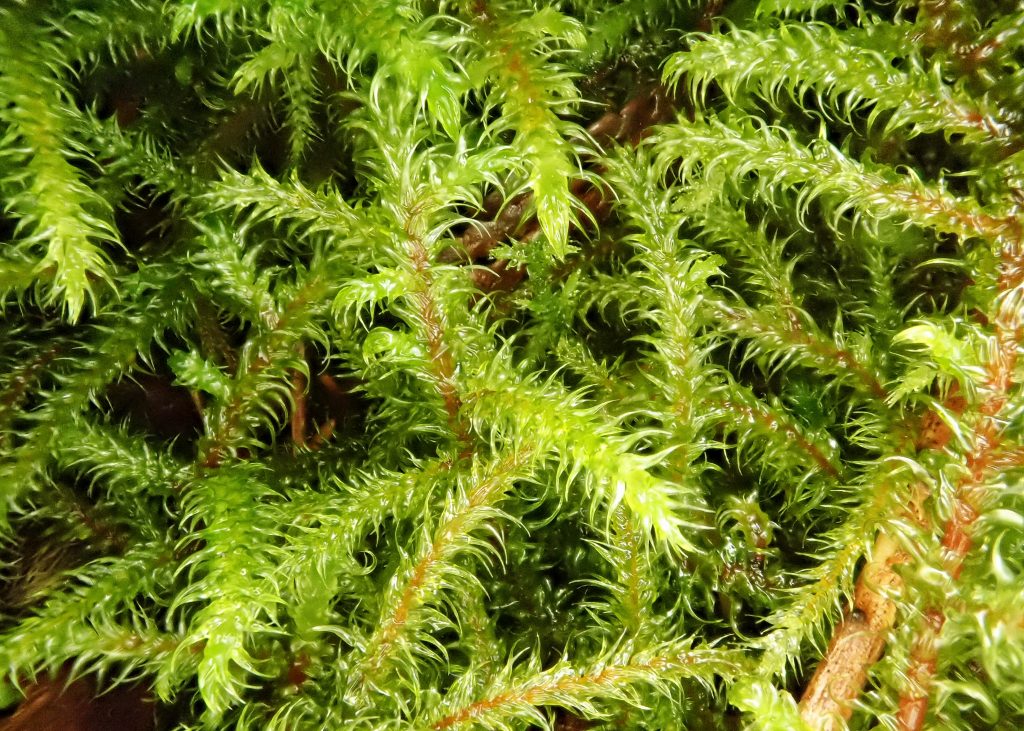
When I wrote about Rhytidiadelphus triquetrus last month I mentioned that it added chaos to the texture of the forest floor mosses. Rhytidiadelphus loreus does the same thing but in a less messy way. Its mats seem quite helter skelter, but individual shoots are not disheveled at all. In fact they are pleasingly symmetrical.
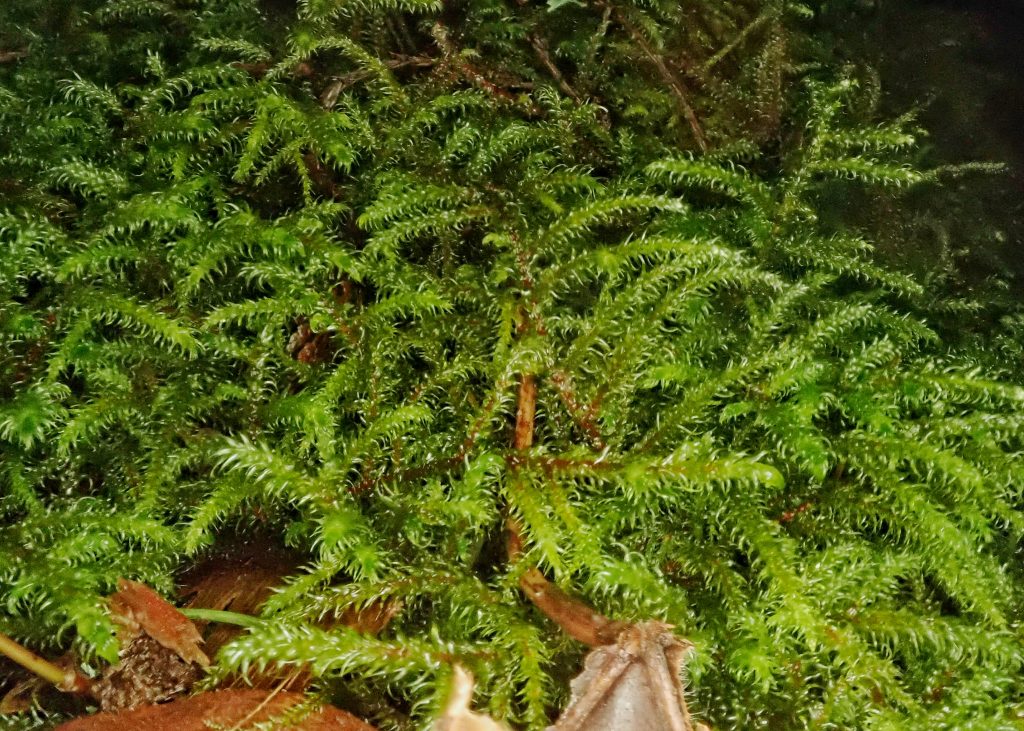
It’s appearance is somewhat streaky due to the plicate leaves and reddish brown stems. It also looks prickly because of the long, falcate leaf apices, but it is as soft to the touch as any other moss, and much softer than most mosses in Polytrichaceae.
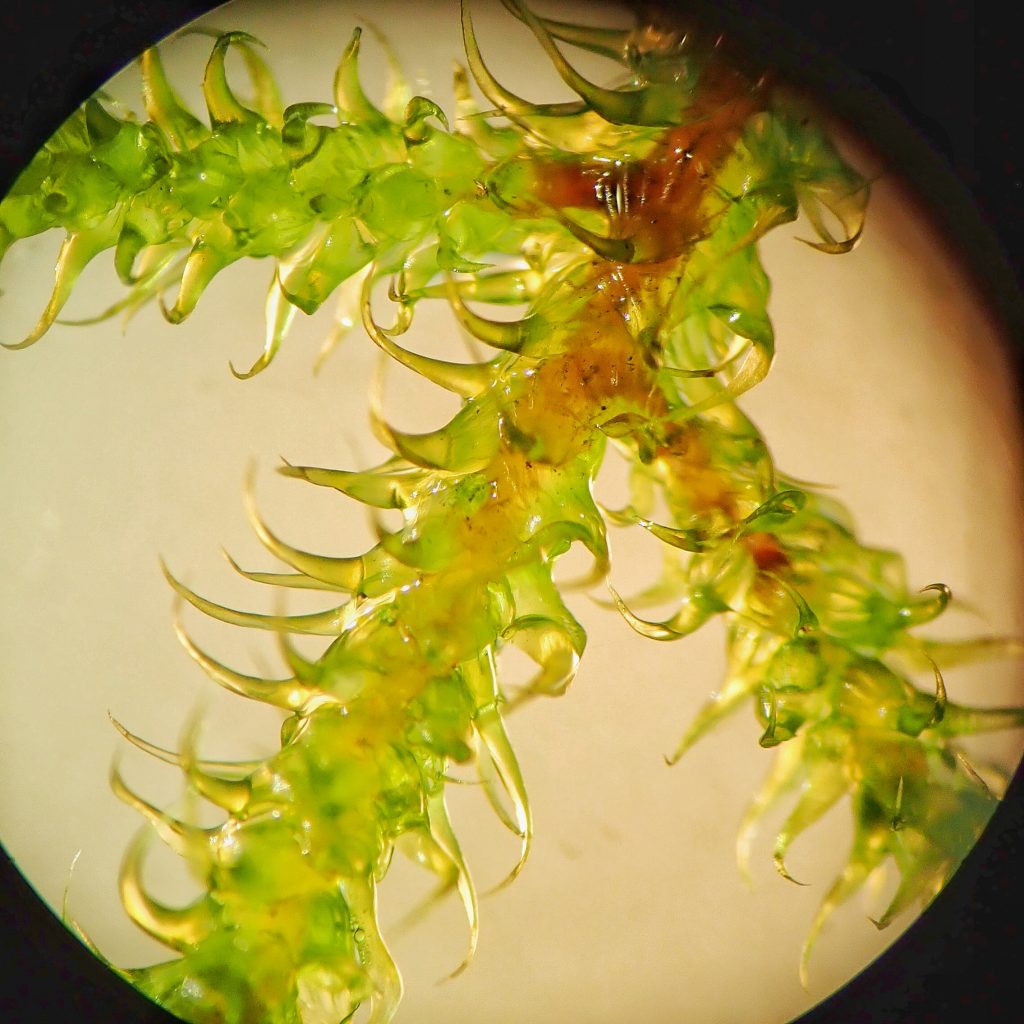
Description– Erect to prostrate pleurocarpus moss which forms mats with shoots going every-which-way; irregularly branched with branches getting shorter distally along the stem; leaves falcate (hooked at apex), wrinkled, with short double costa only extending 1/4 of the leaf;
Similar species– Rhytidiadelphus triquetrus is more disheveled looking, has more, longer, and thicker branches, an angled tuft at the shoot tip, and the costa extends over half the distance to the leaf apex; R. squarrosus lacks wrinkled (plicate) leaves, and they bend at right angles halfway along the leaf; Rhytidium rugosum has transverse rather than longitudinal wrinkles; and Rhytidiopsis robusta is nearly unbranched.
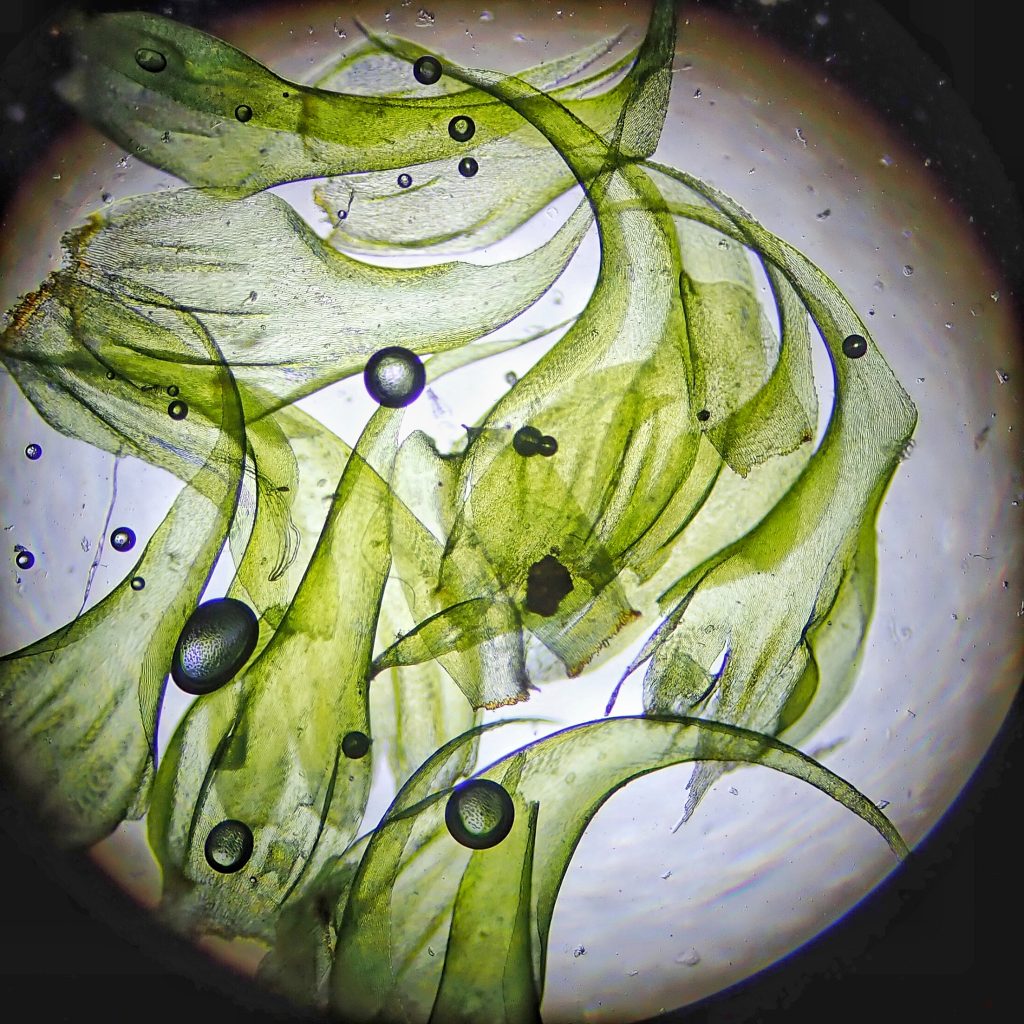
Habitat-On soil, rock, logs, bases of trees, in moist coniferous forests up to 3000’ elevation.
Range– Areas of oceanic influence in North America and Europe; region wide in appropriate habitat, but more common west of the Cascades.
Reproductive timing– Spring into summer
Eaten by– Some mites, and nematode worms, consume the inner cell tissues; Slugs, snails, and small rodents may graze the capsules.
Etymology of names– Rhytidiadelphus is from the Greek, and means ‘brother of Rhytidium’, another genus of moss with very wrinkled leaves (from the Greek ‘rhytis’, for wrinkled). The specific epithet loreus means strap or bridle in Latin, and possibly refers to the short, twin costae looking like a set of reins.
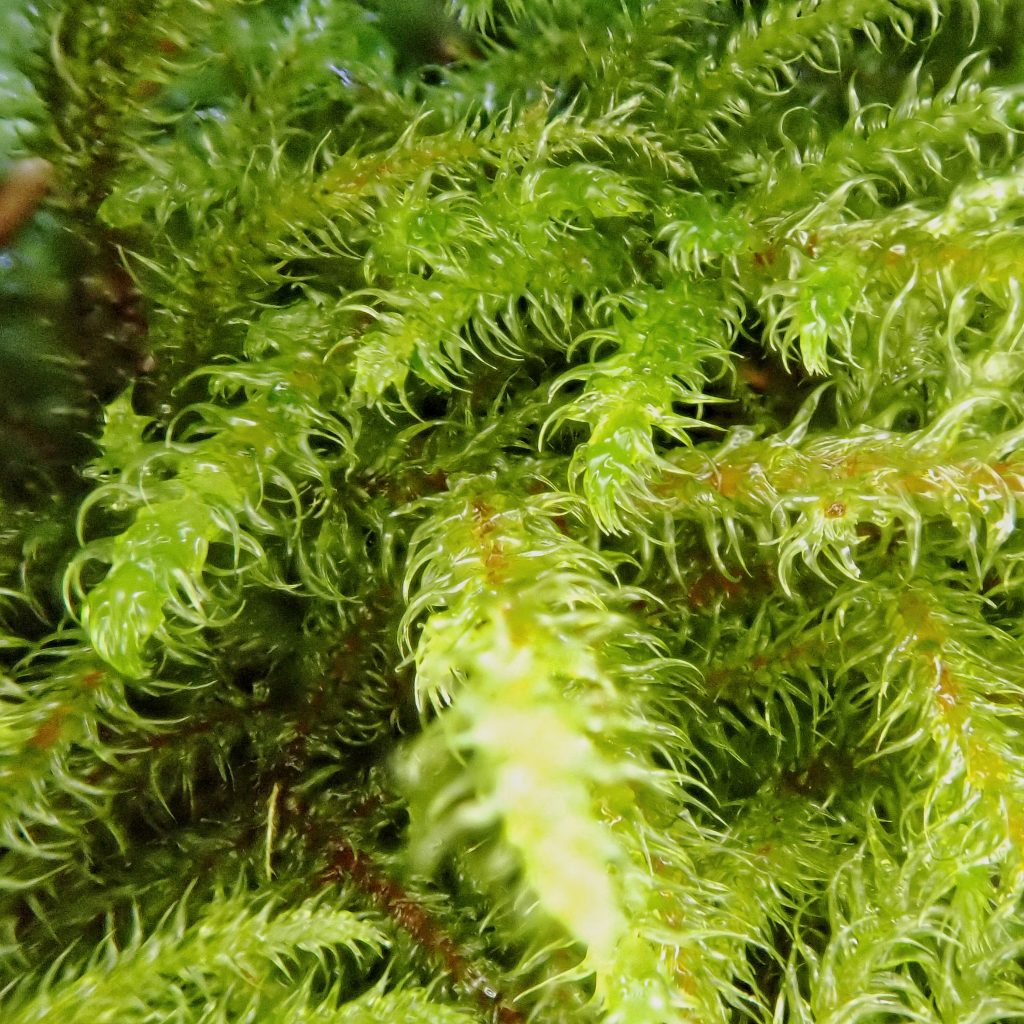
http://www.efloras.org/florataxon.aspx?flora_id=1&taxon_id=200002591
https://www.centralcoastbiodiversity.org/lanky-moss-bull-rhytidiadelphus-loreus.html
https://websites.rbge.org.uk/bbs/Activities/mosses/Rhytidiadelphus%20loreus.pdf
https://www.naturespot.org.uk/species/little-shaggy-moss
http://analogicalplanet.com/Pages/ContentPages/Mosses/Rhytidiadelphus.html
